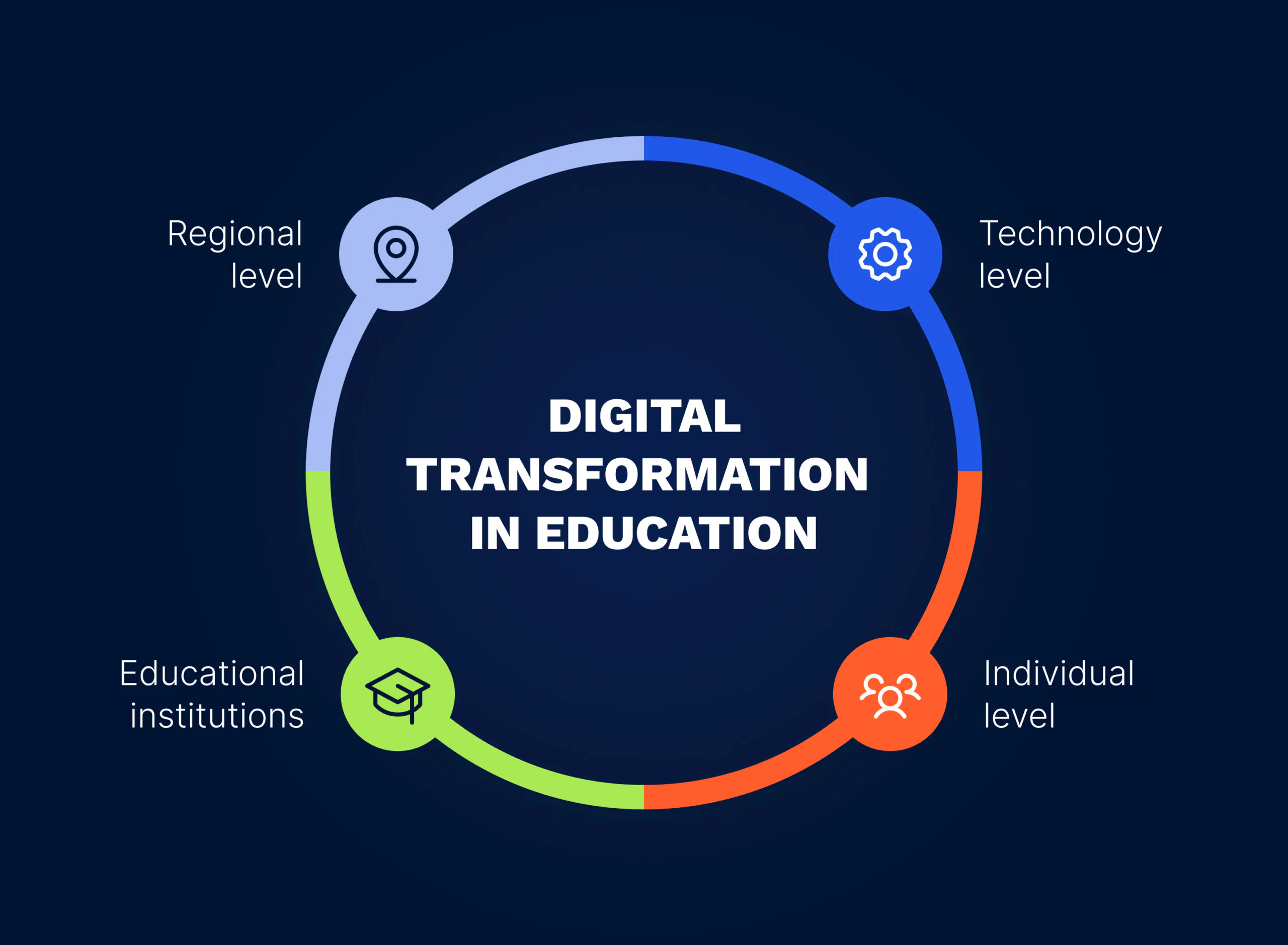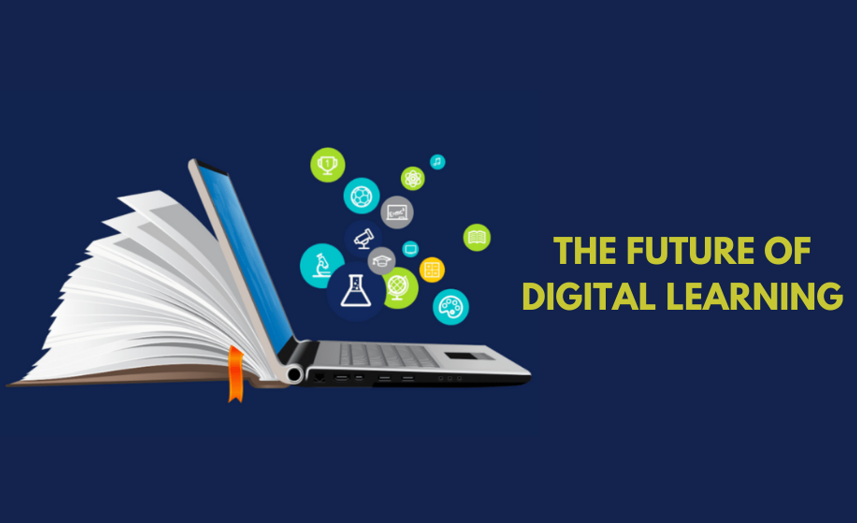Technology
Tech and Education: Transforming Learning in the Digital Age

The education landscape is undergoing a significant transformation. Technology is no longer an afterthought in classrooms; it’s rapidly becoming an essential tool for enhancing learning experiences. This comprehensive exploration delves into the exciting intersection of technology and education, examining how digital tools are impacting teaching methods, student engagement, and overall learning outcomes.
1. A Dynamic Duo: The Power of Tech in Education
Technology offers a multitude of benefits for education, empowering both teachers and students:
- Enhanced Learning Experiences: Tech tools can make learning more interactive, engaging, and visually appealing. Simulation software, virtual reality (VR), and augmented reality (AR) can create immersive learning environments that bring abstract concepts to life.
- Real-Life Example: VR field trips allow students to virtually explore historical sites, museums, or even the human body, fostering deeper understanding and engagement compared to traditional textbooks.
- Personalized Learning: Technology can personalize the learning experience by catering to individual student needs and learning styles. Adaptive learning platforms can adjust the difficulty level and content based on student performance, ensuring a more efficient learning process.
- Real-Life Example: Learning management systems (LMS) like Canvas or Blackboard allow teachers to create personalized learning pathways for students, offering differentiated instruction materials and activities.
- Improved Collaboration and Communication: Online collaboration tools and communication platforms enable students to work together on projects, share ideas, and engage in discussions regardless of physical location.
- Real-Life Example: Video conferencing platforms like Zoom or Microsoft Teams facilitate communication between students and teachers and enable collaboration on projects across geographical boundaries.
- Accessibility and Equity: Technology can bridge educational gaps. Assistive technologies can support students with disabilities, while online learning platforms allow students in remote locations to access quality education.
- Real-Life Example: Text-to-speech software can assist students with reading difficulties, while online courses provide educational opportunities for students in underserved communities with limited access to traditional educational resources.
- Empowering Educators: Technology can be a powerful tool for teachers, providing them with access to a wealth of resources, facilitating lesson planning, and enabling them to track student progress and provide real-time feedback.
- Real-Life Example: Online lesson plan repositories like Teachers Pay Teachers offer educators access to a vast array of ready-made resources, saving them valuable time and allowing them to focus on personalized instruction.
2. Beyond the Hype: Addressing Challenges and Ensuring Responsible Use
While technology offers immense potential, it’s important to acknowledge some challenges:
- Digital Divide: Unequal access to technology and high-speed internet can exacerbate educational inequities. Initiatives are necessary to bridge the digital divide and ensure all students have access to the learning tools they need.
- Distractions and Screen Time: Technology can be distracting, and excessive screen time can negatively impact student learning and well-being. Strategies for promoting responsible tech use and fostering healthy screen habits are crucial.
- Teacher Training and Support: Teachers need proper training and support to effectively integrate technology into their classrooms. Professional development initiatives are essential for equipping educators with the skills to leverage tech for optimal learning outcomes.
- Data Privacy and Security: Student data privacy and security are paramount when using online learning platforms and educational technology tools. Schools and technology providers must implement robust privacy policies and security measures.
- Ethical Considerations: The use of AI and algorithms in personalized learning raises ethical concerns regarding potential biases and the need for human oversight in student assessment and learning processes.
- 3. Shaping the Future of Education: Emerging Tech Trends
The future of education is brimming with exciting tech trends that hold the potential to further revolutionize learning:
- Artificial Intelligence (AI) in Education: AI-powered tutors can offer personalized learning support, analyze student data to identify areas needing improvement, and provide targeted interventions.
- Real-Life Example: AI-powered writing assistants like Grammarly can provide students with real-time feedback on their writing, helping them improve grammar, clarity, and style.
- Virtual Reality (VR) and Augmented Reality (AR) Integration: VR and AR experiences can create immersive learning simulations that allow students to engage with complex topics in a more interactive way.
- Real-Life Example: AR apps can be used to overlay virtual objects or information onto the real world, allowing students to learn about historical landmarks or scientific concepts in an interactive context.
- The Rise of the “Flipped Classroom” Model: Technology allows pre-recorded lectures and learning materials to be delivered online, freeing up classroom time for interactive activities, discussions, and personalized instruction.
- Gamification in Education: Learning through games can make education more engaging and motivate students. Educational games can be used to teach a variety of subjects, from math and science to history and language arts.
Real-Life Example: Educational apps like Duolingo use gamification elements like points, badges, and leaderboards to make language learning fun and engaging.
- The Rise of Big Data and Learning Analytics: By analyzing student data from various sources, educators can gain valuable insights into student performance, identify learning gaps, and personalize instruction for better outcomes.
- Real-Life Example: Learning management systems (LMS) can track student progress on assignments, quizzes, and online activities, providing data that allows teachers to identify areas where students might need additional support.

4. Building a Blended Future: Striking the Right Balance
Technology should not replace traditional classroom instruction. The ideal educational model leverages the strengths of both:
- The Importance of Human Interaction: The role of teachers as mentors, facilitators, and guides remains crucial. Technology should augment, not replace, the value of human interaction and social learning in the classroom.
- Fostering Critical Thinking and Creativity: While technology can enhance information access, it’s crucial to develop critical thinking skills to evaluate information, identify bias, and solve problems creatively.
- Promoting Digital Citizenship: Educating students about responsible online behavior, digital literacy, and cyberbullying prevention is essential in the digital age.
- The Blended Learning Model: This approach combines online learning activities with traditional classroom instruction, allowing for personalized learning and maximizing the benefits of both worlds.
- Real-Life Example: A flipped classroom model might involve students watching video lectures on basic math concepts online for homework, then using class time for interactive problem-solving activities and personalized instruction from the teacher.
5. Collaboration is Key: Stakeholders Working Together
Optimizing the use of technology in education requires collaboration between various stakeholders:
- Educators: Teachers need ongoing professional development and support to effectively integrate technology into their classrooms.
- Administrators: Schools need to invest in technology infrastructure, provide teachers with necessary resources, and ensure responsible data privacy practices.
- Technology Providers: Tech companies need to develop user-friendly educational tools that align with curriculum standards and address the needs of diverse learners.
- Policymakers: Governments can play a vital role in bridging the digital divide, providing funding for technology in schools, and promoting policies that support innovative educational technology use.
- Parents and Guardians: Parents can support their children’s learning by encouraging responsible technology use, fostering online safety awareness, and engaging in discussions about what their children are learning online.
Real-Life Example: Partnerships between schools and technology companies can lead to innovative learning initiatives like virtual reality field trips or educational game development tailored to specific curriculum requirements.
6. A Brighter Future for Education: The Promise of Tech-Enabled Learning
By embracing technology thoughtfully and strategically, we can create a brighter future for education:
- Empowered Learners: Students become active participants in their learning journey, developing critical thinking skills, problem-solving abilities, and digital literacy essential for success in the 21st century.
- Engaged Educators: Technology empowers teachers to personalize instruction, cater to diverse learning styles, and use real-time data to track student progress and provide effective feedback.
- Enhanced Learning Environments: Technology can create engaging and interactive learning environments that cater to different learning styles and make abstract concepts more accessible.
- Equity and Accessibility: Technology can bridge educational gaps by providing access to quality learning resources regardless of location or socioeconomic background.
7. Call to Action: Embracing Technology for a Transformed Learning Experience
Technology is a powerful tool for transforming education. Here are some ways to get involved:
- Educators: Explore new educational technologies, seek professional development opportunities, and actively participate in discussions about integrating technology effectively into your classroom practices.
- Parents and Guardians: Stay informed about the technologies your children are using for educational purposes, encourage responsible tech use, and communicate with teachers about your child’s learning journey.
- Students: Be an active participant in your learning! Explore educational technology tools, seek opportunities to use technology for creative projects, and develop critical thinking skills to evaluate information encountered online.
- Advocates and Policymakers: Support initiatives that bridge the digital divide, promote equitable access to technology in education, and advocate for policies that encourage responsible and effective technology integration within schools.
By working together, we can leverage the power of technology to create a more engaging, personalized, and effective learning experience for every student, paving the way for a brighter future for education.
